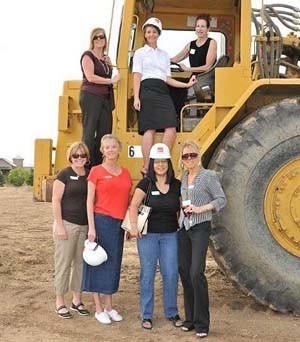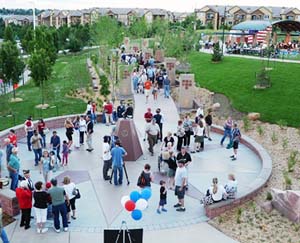The Future of Reference is Outside the Library

Over the last decade, the fortress-like walls of the library reference desk have been breached in favor of more inviting structures and roving librarians. However, that’s not going far enough, according to Jamie LaRue, director of Douglas County (CO) Libraries: “It’s not just time to leave your desk; it’s time to leave the building.”
LaRue shared his vision for the future of reference in a 2013 webinar, Leaving Fort Ref: Frontiers of Embedded Librarianship. If public libraries are to fully embody their role as bedrock of the community, they need to see themselves as much more than information specialists. Those who staff our libraries have important work as relationship builders, storytellers, and assets to the community.
“I believe this is one of the most profound transformations going on in librarianship today. This is the future of reference services, not just passively waiting behind Fort Reference for people to come in and ask us questions, but actively organizing, understanding, cataloging our communities, figuring out where we can have the greatest impact, and making our communities stronger.”
The intriguing story of how to actually make this happen was told by Douglas County librarians Colbe Galston and Amy Long. They are among the first to boldly venture beyond their library walls into the frontiers of community embedded librarianship. Listen to the webinar archive for the rich personal details of their experience. Following are just a few of the highlights.
Ø Amy Long delineated the multiple levels of buy-in necessary to implement such a radical new approach to reference services—from the “boss” (including directors, board members, city council), from staff (especially those asked to go outside their comfort zone), and from the community. Long had the most trepidation about convincing the community that her (the library’s) presence was of value. At her first Chamber Board meeting, she humbly said: “I’m here from the library and I’d like to learn more about your organization and how the library can support you in your goals.” Their response? “Wonderful!”
Ø Colbe Galston tackled the question of how to select a starting point. She described the environmental scan they did for the “moving and shaking” organizations and individuals in the community. This was followed by a widespread community interview project in which pairs of library staff engaged in “reference interviews,” eliciting answers to three key questions:
- What issues are your constituents dealing with that will be important to them over the next 18-24 months?
- What decisions will you have to make in the next 18-24 months, and what information would you like to have first?
- Who else do you think we should speak with?
Ø Galston took her first plunge into a newly-formed, informal community group—the Parker Downtown Development Committee, which wanted to revitalize the downtown shopping district. She attended meetings, and offered to take minutes and handle their email distribution list. She amazed them with her research skills, like compiling information on local architecture history and styles. In the long run, Galston built strong relationships with motivated community leaders.
Ø Long emphasized that the most significant thing a community reference librarian can do is show up and pay attention. Paying attention is more than just listening. It means connecting the dots that spark new ideas, facilitating relationships between groups, and looking for reference opportunities to research information that will help the group move forward.

The webinar has been retired, but was the inspiration for Leaving Fort Ref - Reaching Out with Reference, a free WebJunction self-paced course based on this webinar. It is packed with inspiration that will propel you outside of your library and into the future of community reference. Boldly go watch it!
[The Veteran's Monument at Highlands Ranch Library was a collaboration between the Highlands Ranch Community Association and the library; photo courtesy of Douglas County Libraries.]
